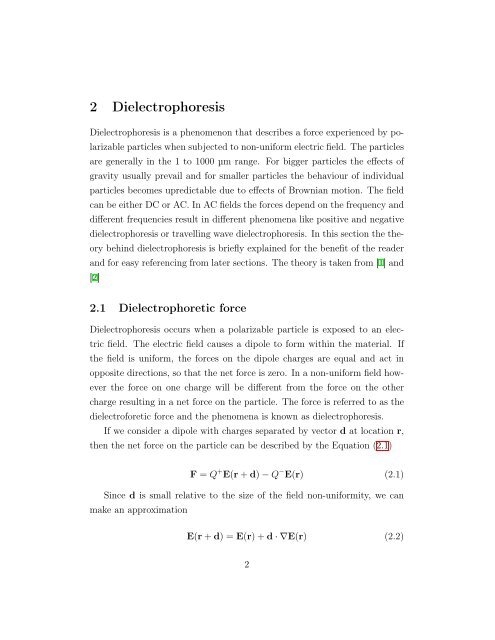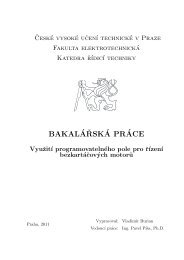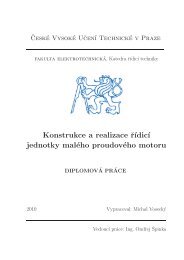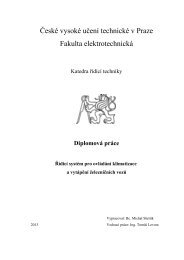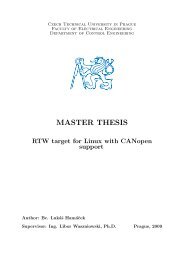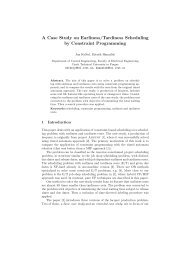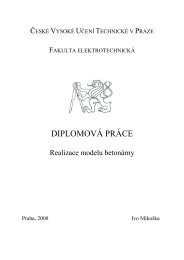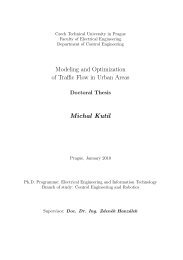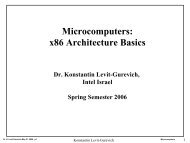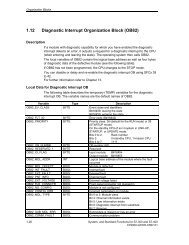Bachelor Thesis - Czech Technical University in Prague
Bachelor Thesis - Czech Technical University in Prague
Bachelor Thesis - Czech Technical University in Prague
You also want an ePaper? Increase the reach of your titles
YUMPU automatically turns print PDFs into web optimized ePapers that Google loves.
2 DielectrophoresisDielectrophoresis is a phenomenon that describes a force experienced by polarizableparticles when subjected to non-uniform electric field. The particlesare generally <strong>in</strong> the 1 to 1000 µm range. For bigger particles the effects ofgravity usually prevail and for smaller particles the behaviour of <strong>in</strong>dividualparticles becomes upredictable due to effects of Brownian motion. The fieldcan be either DC or AC. In AC fields the forces depend on the frequency anddifferent frequencies result <strong>in</strong> different phenomena like positive and negativedielectrophoresis or travell<strong>in</strong>g wave dielectrophoresis. In this section the theorybeh<strong>in</strong>d dielectrophoresis is briefly expla<strong>in</strong>ed for the benefit of the readerand for easy referenc<strong>in</strong>g from later sections. The theory is taken from [1] and[2]2.1 Dielectrophoretic forceDielectrophoresis occurs when a polarizable particle is exposed to an electricfield. The electric field causes a dipole to form with<strong>in</strong> the material. Ifthe field is uniform, the forces on the dipole charges are equal and act <strong>in</strong>opposite directions, so that the net force is zero. In a non-uniform field howeverthe force on one charge will be different from the force on the othercharge result<strong>in</strong>g <strong>in</strong> a net force on the particle. The force is referred to as thedielectroforetic force and the phenomena is known as dielectrophoresis.If we consider a dipole with charges separated by vector d at location r,then the net force on the particle can be described by the Equation (2.1)F = Q + E(r + d) − Q − E(r) (2.1)S<strong>in</strong>ce d is small relative to the size of the field non-uniformity, we canmake an approximationE(r + d) = E(r) + d · ∇E(r) (2.2)2


